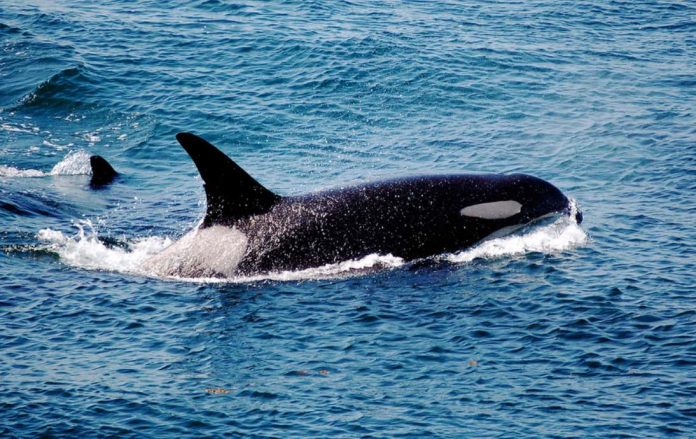Scientists have trained an orca whale named to mimic human speech, making her one of the first mammals to accomplish the feat.
And while such a feat – augmented by teaching the same whale to repeat “one, two” and other unusual sounds – might sound like a circus trick, it has a serious purpose behind it.
The vocalisations were performed by a 14-year-old female killer whale (Orcinus orca) called Wikie, who lives at the Marineland Aquarium in Antibes, France. They are described in a paper published in the journal Proceedings of the Royal Society B.
The ability of Wikie to learn and repeat distinctly human sounds is the first time such a phenomenon has been reported in an orca, even anecdotally.
Available literature indicates that imitating human speech is rare among other animals. It is well known, of course, in a few species of birds – notably parrots and mynahs. Among mammals, however, it is extremely uncommon.
A 2012 study in the journal Current Biology reported a male Asian elephant (Elephas maximus) that could convincingly imitate some Korean words. (To achieve this, the elephant, named Koshik, apparently placed his trunk in his mouth and waggled it about.)
A much earlier study, in 1985, reported two adult male harbour seals (Phoca vitulina) that “mimicked one or more English words and phrases”.
And in 2012, another paper in Current Biology reported “spontaneous mimicry of the human voice” by a beluga whale (Delphinapterus leucas). (In this paper, the authors quote a 1979 account in which the same species was described as making sounds like a “garbled human voice, or Russian, or similar to Chinese”.)
Wikie’s success takes the number non-human mammal species capable of imitating human speech to four.
In their paper, a team of researchers led by Jose Abramson of the Pontificia Universidad Catolica de Chile, in Santiago, Chile, describe exposing Wikie to 11 novel sounds, some human and some not, and asking her to repeat them. The whale had already been the subject of another experiment, four years earlier, about mimicking movements, and had thus learned a specific command signifying “repeat after me”.
Wikie listened to the sounds both live, and replayed as recordings.
The non-human sounds included a strong raspberry, a breathy raspberry, and a creaking door. Human words comprised “ah ah”, “hello”, “bye bye”, “Amy”, “one two” and “one two three”.
The researchers discovered that the orca was a fast learner. They report that she made recognisable copies of all the sounds, usually within the first 10 attempts, and sometimes straight away.
Neither Abramson’s team nor the staff at Marineland have any plans to turn Wikie’s speaking prowess into a show for the benefit of visitors, but the achievement helps to shed light on an important aspect of previously recorded wild orca behaviour.
Killer whales have been noted to express themselves in dialects: calls and accents specific to each pod. It is thought that the different speech patterns are in part transmitted vertically, from mother to offspring, but also horizontally – from peer to peer.
Studies have shown that these vocal peculiarities cannot be accounted for genetically, nor by environmental factors. Orca dialects are therefore thought by some researchers to be evidence of “social learning”, of traditions or cultures passed on geographically and down generations by non-genetic means.
The Marineland study adds evidence that the whales are indeed capable of modifying their own speech patterns in response to hearing new sounds.
“The results reported here show that killer whales have evolved the ability to control sound production and qualify as open-ended vocal learners,” the scientists conclude.















